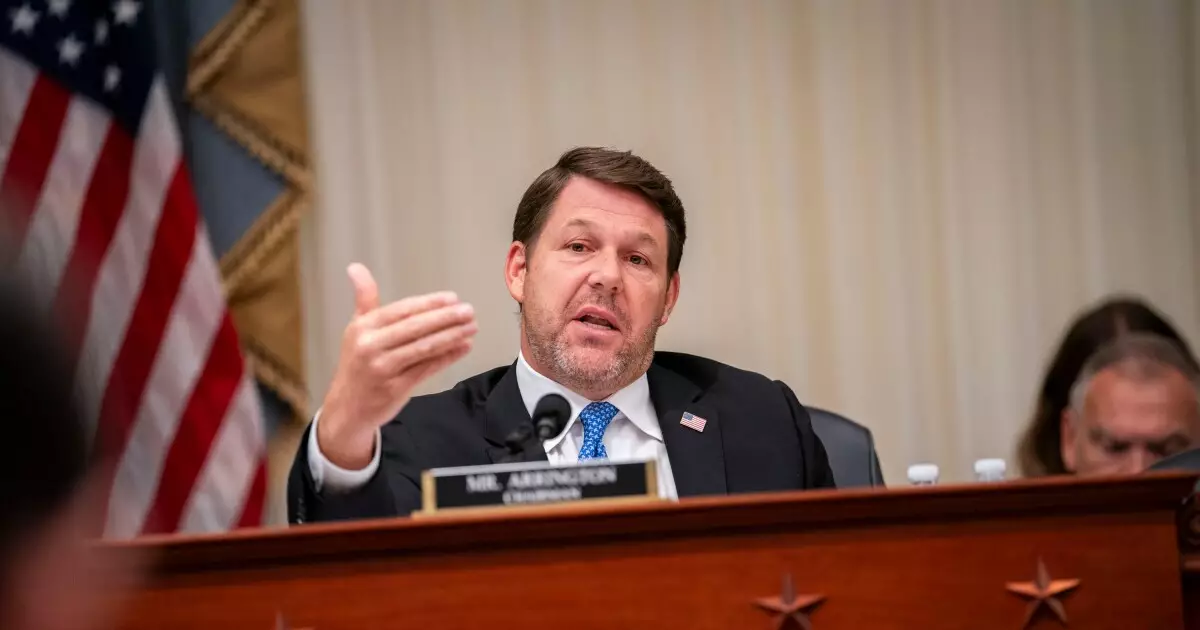The partisan atmosphere surrounding the U.S. House Budget Committee has garnered significant attention as lawmakers passed a budget resolution intended to pave the way for a future reconciliation package. This article will delve into the implications of this resolution, particularly focusing on its potential effects on tax policies, budgetary constraints, and the broader fiscal landscape.
Late Thursday, the House Budget Committee achieved a notable, albeit contentious, milestone by securing a budget resolution through a narrow party-line vote of 21-16. This resolution underscores the dedication of House Republicans, who operate with an extremely slim majority, in driving forward their fiscal agenda. A key aspect of this debate unfolded over a grueling 12-hour session, revealing deep divisions within the committee regarding the future of tax reforms and budgetary allocations.
The budget resolution, as it stands, significantly reshapes previous financial planning frameworks. It outlines a spending blueprint that could facilitate critical discussions about the tax exemption for municipal bonds, drawing close scrutiny from stakeholders in the municipal market. Such developments are pivotal, as they may influence investment strategies and financial planning at local and state levels.
The House’s budget resolution integrates broad policy goals, notably linking tax cuts with substantial spending reductions. Initially, the resolution allocated a staggering $4.5 trillion directed toward tax cuts, much of which is expected to emerge from extensions to the 2017 Tax Cuts and Jobs Act (TCJA). To maintain fiscal accountability, it also tasked other committees with identifying $2 trillion in cuts.
However, the resolution’s amendments effectively tighten the grip on the House Ways and Means Committee, reducing its flexibility in pursuing tax relief measures. Under the new stipulations, if the committee fails to identify the required $2 trillion cuts, it must scale back its tax relief proposals proportionately. Conversely, there exists a provision enabling the committee to expand tax cuts beyond $4.5 trillion should it successfully achieve greater spending reductions. This dual dynamic cultivates an atmosphere of uncertainty, as the committee navigates competing priorities within the fiscal framework.
The Debt Ceiling and Broader Fiscal Considerations
Further complicating matters is the resolution’s provision for a $4 trillion increase in the debt ceiling. As the nation approaches a critical juncture often referred to as the “X date,” this increase is seen as essential to avert a potential financial impasse that could arise from the inability to meet existing fiscal obligations. The current trajectory indicates a pressing need for robust legislative discussions surrounding expenditure, revenue generation, and debt management.
House Budget Chairman Jodey Arrington articulated the significance of this resolution, framing it as a potential catalyst for transformative legislation in alignment with President Trump’s “America First” agenda. Yet, the pathway to actualizing these ambitious goals requires bipartisan negotiations, particularly as the Senate works on its reconciliation parallel. The dichotomy of objectives between the two chambers adds complexity, as highlighted by differences in approach toward the permanency of the TCJA.
As lawmakers prepare for a critical 10-day break, discussions surrounding the newly approved budget resolution are likely to intensify. Lawmakers are aware of the importance of having the budget framework established to facilitate a rapid progression through the reconciliation process. Rep. Kevin Hern emphasized that despite perceptions, the Ways and Means Committee remains actively engaged in tax reform discussions, with considerable groundwork laid prior to public exposure.
The looming challenges encompass not only the fiscal measures themselves but the broader implications for the future of tax policy in the United States. Extended provisions of the TCJA may demand upwards of $5 trillion, prompting the need for innovative revenue solutions and potentially contentious negotiations among lawmakers. Moreover, the insistence from Senate leadership that any tax package must seek to make the TCJA permanent contrasts sharply with the House’s temporary focus.
The passage of the House budget resolution marks a significant juncture in the U.S. legislative landscape. With the reconciliation process poised to unfold rapidly, the coming weeks will be critical in determining the future of tax reform and fiscal policy, as lawmakers navigate a minefield of competing interests and priorities. The impacts of these decisions will reverberate beyond partisan lines, influencing the economic well-being of countless Americans.

